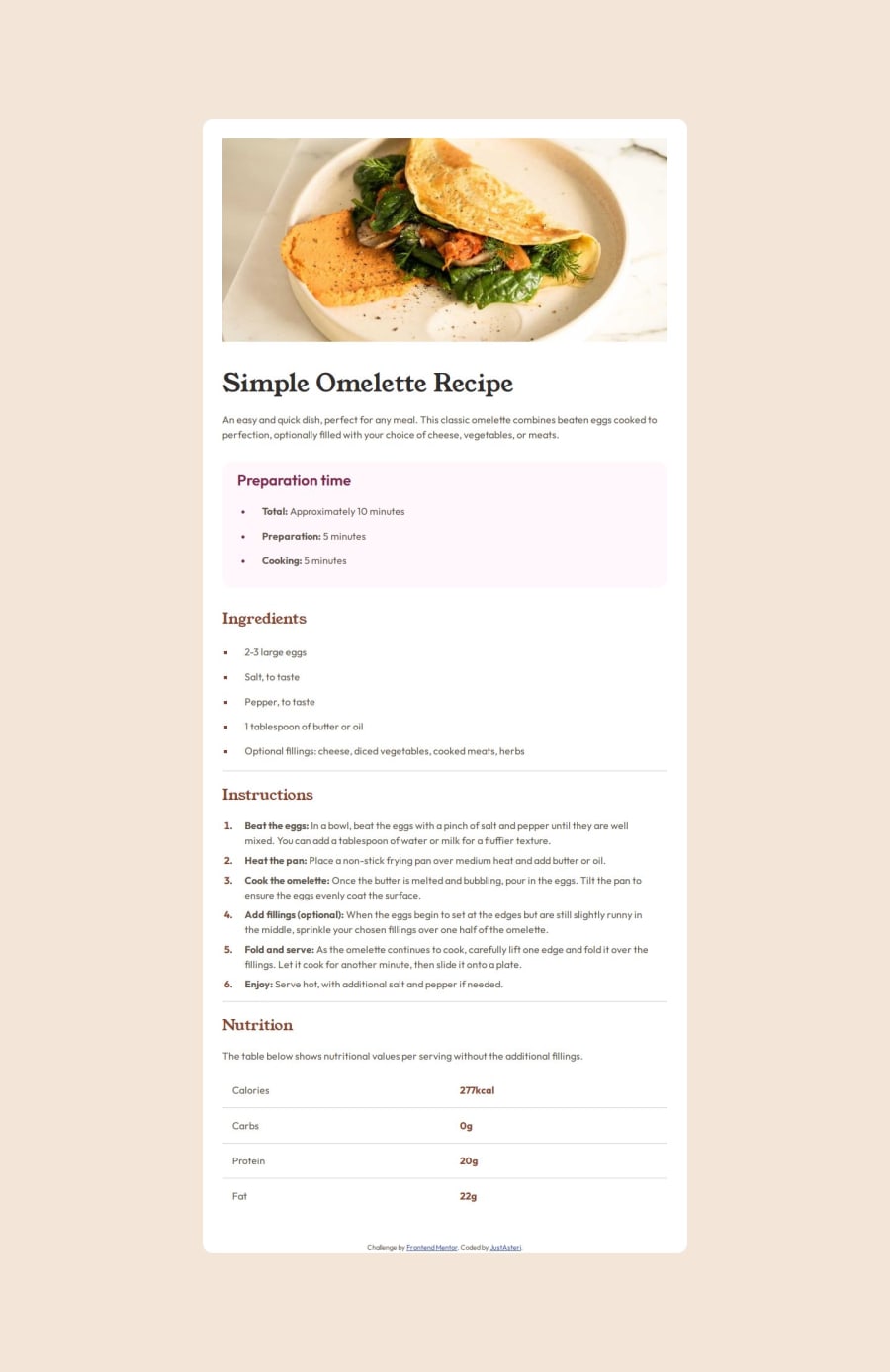
Design comparison
SolutionDesign
Solution retrospective
What are you most proud of, and what would you do differently next time?
I am proud of finishing the project. There were some times and moments where I didn't know how to do something very specific, but after watching a long tutorial and google some issues, I was able to finish :)
I think something that I will do different would be avoiding perfectionism. This is because I try to make a perfect page, but this only caused a burnout on me and make me abandon the project during weeks.
What challenges did you encounter, and how did you overcome them?- Responsibe layout for mobiles
- Trying to do pixel perfect layouts
Community feedback
Please log in to post a comment
Log in with GitHubJoin our Discord community
Join thousands of Frontend Mentor community members taking the challenges, sharing resources, helping each other, and chatting about all things front-end!
Join our Discord
